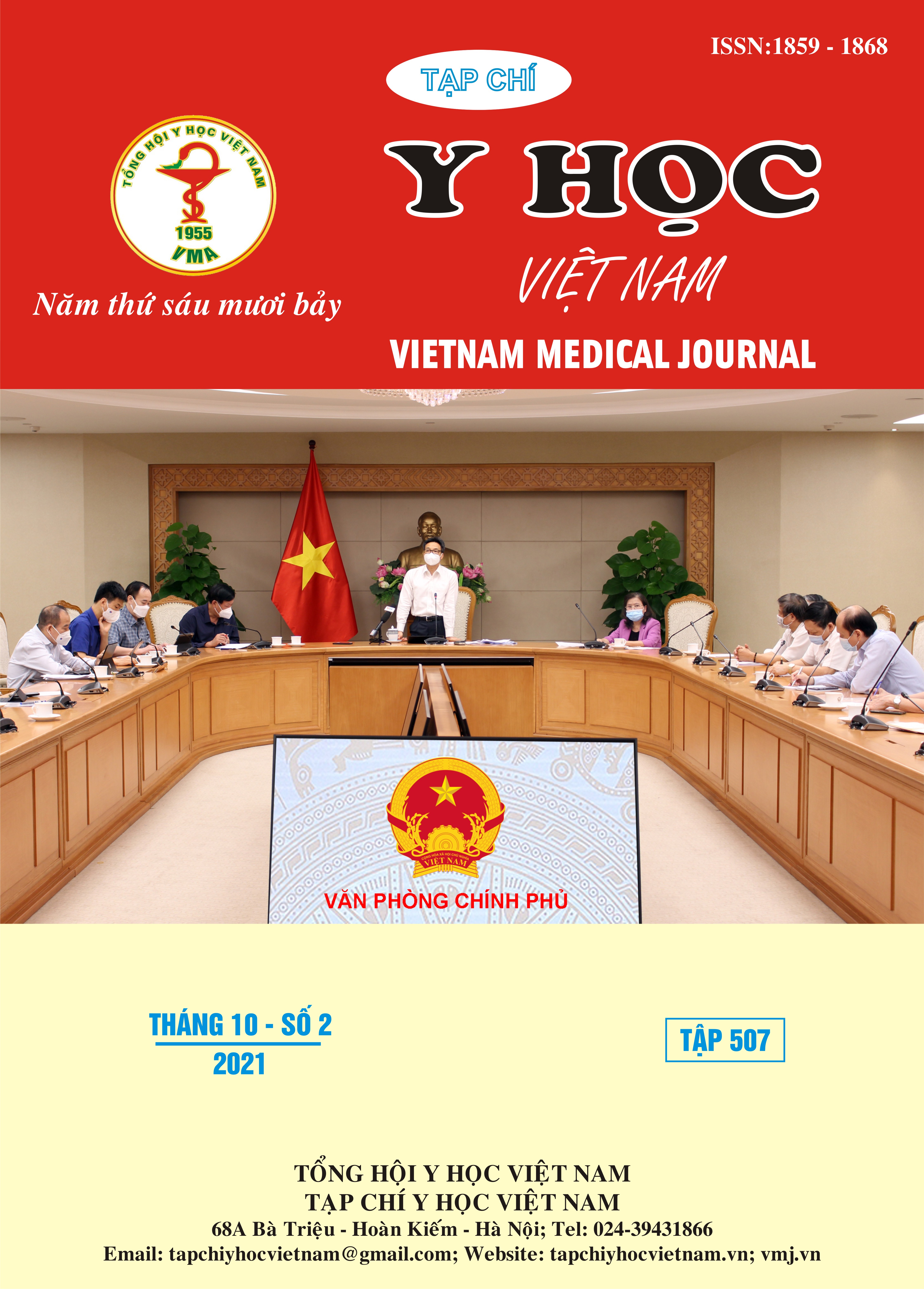THE RELATIONSHIP BETWEEN SERUM AMH HORMONE CONCENTRATIONS AND IVF OUTCOMES
Main Article Content
Abstract
Objective: To investigate the relationship between serum AMH levels and outcomes of in vitro fertilization. Methods: Descriptive retrospective study. Subjects: 157 infertile women between the ages of 23 and 47 undergoing IVF treatment at Center of IVF and Tissue engineering, Hanoi Medical University Hospital, from January 2020 to June 2021, were divided into 3 groups: low, medium and high AMH concentration (<1.25 ng/mL; 1.25-3.57 ng/mL; >3.57 ng/mL, respectively) based on result of the previous study in Vietnam [1]. The parameters of IVF outcomes including the number of retrieved oocytes, the number of retrieved mature oocytes, the fertilization rate, the number of embryos and the quality of the embryos at the cleavage stage, and the corresponding clinical pregnancy rates were compared among these 3 groups. Results: The groups showed no statistical differences in mature oocyte rates, fertilization rates and good quality embryo rates. The number of retrieved oocytes, retrieved mature oocytes, embryos and potential embryos at the cleavage stage in the low AMH level group are smaller than in the medium level group, which is in turn smaller than in the high level group, all the differences are statistically significant. The clinical pregnancy rate showed significant fifferences among the AMH groups. AMH has no predictive value for oocyte quality, but is capable of predicting the number of received oocyte, potential embryos and clinical pregnancy rate.
Article Details
Keywords
AMH, mature oocyte, fertilization rate, embryo cleavage, clinical pregnancy
References
2. Broekmans F.J., Kwee J., Hendriks D.J., et al. (2006). A systematic review of tests predicting ovarian reserve and IVF outcome. Hum Reprod Update, 12(6), 685–718.
3. Xu H., Zeng L., Yang R., et al. (2017). Retrospective cohort study: AMH is the best ovarian reserve markers in predicting ovarian response but has unfavorable value in predicting clinical pregnancy in GnRH antagonist protocol. Arch Gynecol Obstet, 295(3), 763–770.
4. ALPHA Scientists In Reproductive Medicine and ESHRE Special Interest Group Embryology (2011). Istanbul consensus workshop on embryo assessment: proceedings of an expert meeting. Reprod Biomed Online, 22(6), 632–646.
5. Zegers-Hochschild F., Adamson G.D., de Mouzon J., et al. (2009). The International Committee for Monitoring Assisted Reproductive Technology (ICMART) and the World Health Organization (WHO) Revised Glossary on ART Terminology, 2009. Human Reproduction, 24(11), 2683–2687.
6. Kelsey T.W., Wright P., Nelson S.M., et al. (2011). A validated model of serum anti-müllerian hormone from conception to menopause. PLoS ONE, 6(7), e22024.
7. Zhang B., Meng Y., Jiang X., et al. (2019). IVF outcomes of women with discrepancies between age and serum anti-Müllerian hormone levels. Reprod Biol Endocrinol, 17(1), 58.
8. Dai X., Wang Y., Yang H., et al. (2020). AMH has no role in predicting oocyte quality in women with advanced age undergoing IVF/ICSI cycles. Sci Rep, 10(1), 19750.
9. Eldar-Geva T., Ben-Chetrit A., Spitz I.M., et al. (2005). Dynamic assays of inhibin B, anti-Mullerian hormone and estradiol following FSH stimulation and ovarian ultrasonography as predictors of IVF outcome. Human Reproduction, 20(11), 3178–3183.


